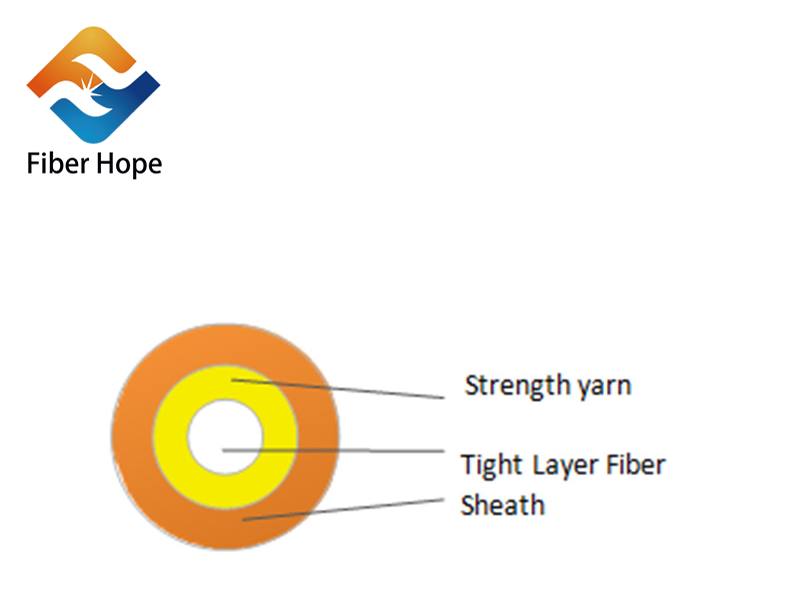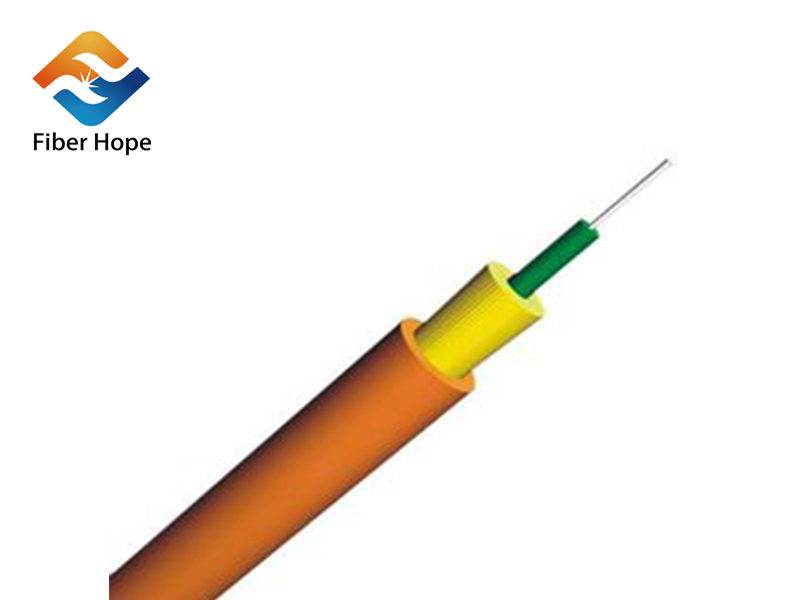Fiber Hope Optical Communication Tech Co.,Ltd.
E-mail:kevin@fh-fiber.com
Fiber Hope optical fiber communication expert & fiber optic cable manufacturer
E-mail:kevin@fh-fiber.com
Fiber Hope optical fiber communication expert & fiber optic cable manufacturer
In today’s fast-paced digital world, the demand for high-speed internet connectivity and reliable communication networks has never been greater. One of the most efficient solutions to meet this demand is the use of indoor fiber optic cables. Among various types of fiber optic cables, the GJIFH cable stands out due to its specific design features and versatile applications. This article will delve into the characteristics of the GJIFH indoor fiber cable and explore its diverse range of applications.


GJIFH is a type of indoor optical fiber cable that is widely used in telecommunications and data transmission systems. The acronym "GJIFH" signifies its construction details:
· G: Indicates that it is a general-purpose cable.
· J: Refers to the type of fiber used within the cable - typically plastic or glass.
· I: Stands for the inclusion of an inner layer of protection for the fibers.
· F: Signifies the presence of a fire-resistant sheath material.
· H: Indicates the helically wound design of the cable.
This combination of characteristics makes GJIFH cables suitable for various indoor applications, providing both flexibility and durability.
One of the primary advantages of GJIFH fiber cables is their high bandwidth capacity. Unlike traditional copper cables, fiber optics can transmit data at much higher speeds and over longer distances without significant loss of signal quality. This capability is crucial for modern applications, including cloud computing, video conferencing, and data-intensive tasks.
The GJIFH fiber cable exhibits low signal attenuation, meaning that the loss of signal strength over long distances is minimal. This feature ensures that data can be transmitted over extended lengths without the need for frequent signal boosters or repeaters. As a result, GJIFH cables are ideal for large buildings and campuses where long runs of cable are necessary.
The GJIFH fiber cables are constructed with fire-resistant materials, which meet stringent safety standards. This feature is particularly important for indoor installations, where the risk of fire can pose serious safety hazards. The use of fire-retardant materials helps to prevent the spread of flames and ensures that the cable remains operational even in emergency situations.
GJIFH cables are designed to be lightweight and flexible, making them easy to install and manage. Their compact size allows for easier routing within buildings, reducing the amount of space required for cable trays and conduits. This flexibility also enables easier modifications and upgrades to existing installations, accommodating new technologies as they emerge.
Indoor environments can present various challenges, including exposure to moisture, chemicals, and physical stress. GJIFH cables are designed to resist such environmental factors, ensuring long-term performance and reliability. Their robust construction helps to protect the delicate fiber strands from damage, maintaining optimal performance over time.
When comparing the total cost of ownership, GJIFH fiber cables often prove to be a more cost-effective solution than traditional copper cabling. Although the initial installation costs may be higher, the long-term savings associated with reduced maintenance, lower energy consumption, and increased bandwidth make GJIFH an attractive choice for many organizations.
Due to their unique features, GJIFH fiber cables find applications across a wide array of sectors and environments. Below are some of the key areas where GJIFH cables are commonly used:
Data centers require high-speed networking capabilities to support vast amounts of data traffic generated by servers and storage devices. GJIFH cables, with their high bandwidth and low attenuation, are ideal for interconnecting various components within data centers. They enable faster data transfers and provide a reliable backbone for cloud services and virtualized environments.
Telecommunication companies rely heavily on fiber optic technology to deliver services to consumers and businesses. GJIFH cables are used in the internal wiring of telecom facilities, connecting switches, routers, and other essential equipment. Their fire-resistant properties also enhance safety in these critical infrastructures.
Modern office spaces demand robust networking solutions to support a multitude of devices, from computers to smartphones. GJIFH cables seamlessly integrate into existing office environments, providing the necessary bandwidth for internet access, VoIP services, and multimedia applications. Their flexibility allows for easy reconfiguration of office layouts without extensive cabling work.
Schools and universities rely on dependable network infrastructure to facilitate e-learning, research, and administrative functions. GJIFH cables are used to connect classrooms, laboratories, and libraries, ensuring that students and faculty have access to high-speed internet and digital resources. Their durability is essential in high-traffic areas where cables may be subject to wear and tear.
In healthcare settings, reliable data transmission is critical for patient care and operational efficiency. GJIFH fiber cables support electronic health records, telemedicine, and medical imaging systems, allowing for quick and secure transfer of sensitive information. Their fire-resistant nature also adds an extra layer of safety in hospitals and clinics.
As buildings become increasingly automated through IoT (Internet of Things) technologies, the demand for robust networking infrastructure grows. GJIFH cables facilitate the integration of smart devices, sensors, and control systems within modern buildings. This connectivity enables real-time monitoring and management of building systems, enhancing energy efficiency and occupant comfort.
In manufacturing settings, GJIFH cables can be used to connect machines and systems that require high-speed data exchange for automation processes. Their resistance to environmental factors makes them suitable for factory floors where dust, moisture, and chemicals are prevalent.
The GJIFH indoor fiber cable represents a significant advancement in the field of telecommunications and data transmission. Its unique features—such as high bandwidth capacity, low signal attenuation, fire resistance, and flexibility—make it an ideal choice for a diverse range of applications. From data centers and telecommunications networks to educational institutions and healthcare facilities, GJIFH cables are instrumental in supporting the growing demand for reliable and high-speed connectivity.
As we move further into an era dominated by digital communication and smart technologies, the importance of quality fiber optic solutions like the GJIFH cable will only continue to grow. Adopting such advanced solutions not only enhances performance but also prepares enterprises to meet future challenges in an ever-evolving digital landscape.
Fiber hope fiber optic cable and patch cord manufacturers can provide high-quality fiber optic cables, fiber patch cords, fiber optic cable clamp, welcome to inquiry!
copyright©2025 FIBER HOPE OPTICAL COMMUNICATION TECH CO。,LTD。| All Rights Reserved
Hello, please leave your name and email here before chat online so that we won't miss your message and contact you smoothly.